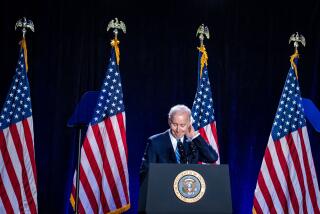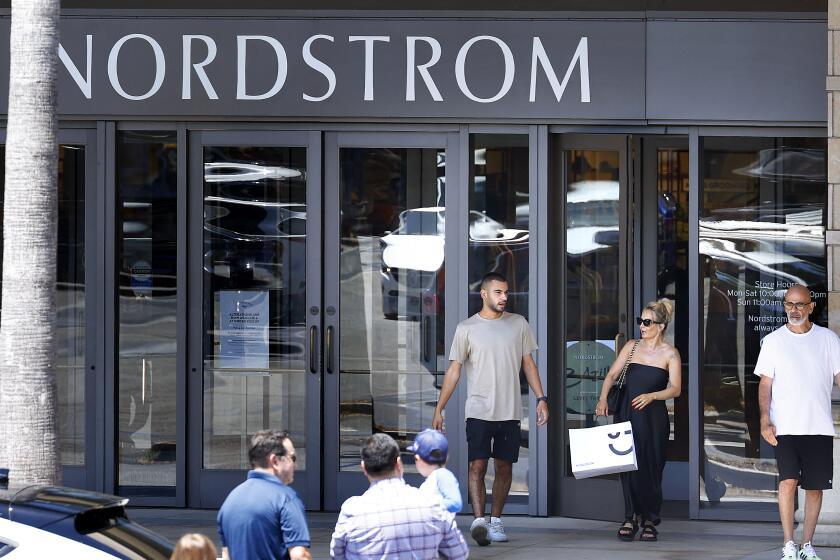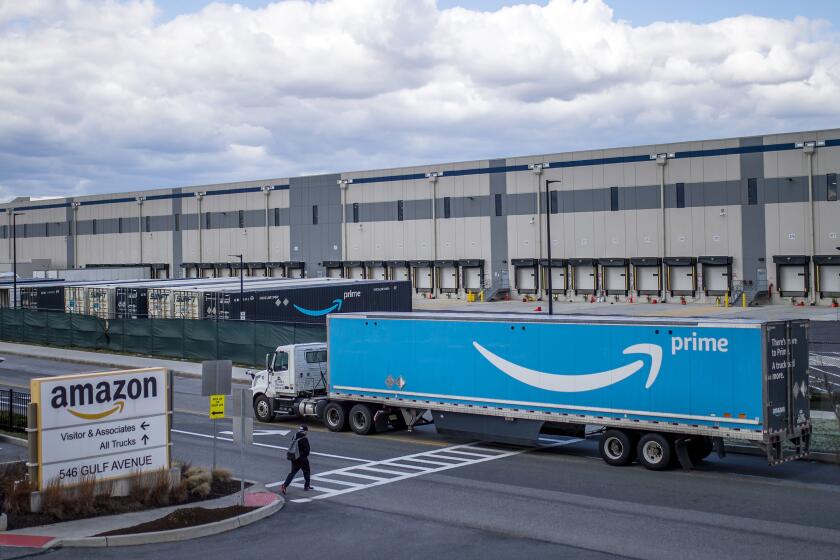Political leaders unwilling to address economic fix: stimulus
- Share via
If there is anything about which the average American has no doubt, it’s that the state of the economy is a five-alarm emergency.
Consumer demand, already weak, is destined to ebb even more as Americans watch their retirement savings and other investments shrivel in the global markets meltdown.
Businesses won’t hire in this kind of environment, no matter how much cash is sitting on their balance sheets.
And the cycle continues to roll, downhill.
These are the times when Americans look to Washington for leadership and solutions. Instead, they’ve gotten a sideshow debate over the long-term implications of the budget deficit — a fight that can wait for another day.
What economists, stock market investors and certainly average American men and women want is more economic demand — construction spending, paychecks, unemployment insurance, government assistance.
Washington can provide that in the form of an economic stimulus package, one that puts people to work for state and local governments and on a wide range of public initiatives that improve education, transportation and the quality of life for millions of Americans.
What our political leaders have given us instead is ideological posturing, threats of default, hand-wringing over government debt.
Forget about last week’s Standard & Poor’s downgrade of U.S. government credit; that’s not what is giving the stock market indigestion. Investors are really concerned about the extent to which Washington has hamstrung itself by taking fiscal policy options off the table.
This is not the fault of either party acting individually; it’s a disease that has infected the entire government. Even President Obama, whose political future is painfully dependent on recovery, seems unwilling to utter the key term: stimulus.
In his weekly radio address Saturday and in his brief appearance before the cameras Monday, he danced around the necessity for aggressive action by the federal government.
On both occasions he mentioned, warily, the need to extend both unemployment insurance eligibility and a payroll tax cut for the working and middle class. Both steps are crucial to continue and augment growth, but even together they are insufficient to get the recovery up on its own two feet.
One of the flaws in the administration’s approach to economic policy is its failure to push back against the notion that its stimulus program, enacted in February 2009, failed.
In fact, it has been an unmistakable success, a point that bears repeating, and repeating.
The Congressional Budget Office, which is known for its bipartisanship, determined in May that in the first quarter of this year alone the program had raised gross domestic product as much as 3.1%, lowered the unemployment rate as much as 1.8% and increased employment by up to 3.3 million workers.
But the program’s impact had already begun to wane, the CBO said — not a surprise to anyone examining the fading economic growth numbers for the first part of this year.
Yet remarkably, many stimulus options that the White House and Congress seem determined to forgo today are among those that the CBO said were the most effective. These include stepped-up federal purchases of goods and services for public works, and assistance to state and local governments for infrastructure improvements.
Along with unemployment benefits, the CBO found, these have the highest multiplier effect on the overall economy — that is, the highest potential to spur growth beyond the initial outlay. The payroll tax cut and (especially) tax cuts for wealthier people bring up the rear on that measure.
The withdrawal of federal help for state and local governments has produced perhaps the most visible sign of the stimulus ending: the sharp falloff in government employment. Since May, state and local governments have pared their payrolls by about 60,000 workers (and the federal government another 11,000). In a period in which the private sector added only 234,000 jobs, that’s a big helping of sand in the recovery gears.
The Bureau of Labor Statistics attributes much of the state-level decline in the last month to a temporary shutdown of Minnesota state government, but that doesn’t alter the long-term trend, which shows a loss of 340,000 state and local jobs over the last year.
It’s fashionable in some political quarters to denigrate these workers as bureaucrats and slugabeds, but leaving aside the injustice of so labeling a workforce that is more than half composed of educators, these are consumers whose contribution to economic activity is indispensable.
It’s sad to watch the U.S. government so enthusiastically overlook the lessons of the 1930s.
Then, as now, the White House and Congress stood by complacently as government stimulus got drained out of the economy. A spike in economic activity from government bonus payments to World War I veterans ended in 1936, as did heightened dividend payouts designed to avoid a new federal corporate tax. And in 1937 appeared yet another new tax, to finance Social Security.
In short, although the private sector had not yet stepped up hiring and the Federal Reserve was tightening credit, the government stopped priming the fiscal pump and instead took water out of the bucket.
The result of the new austerity was the severe recession of 1937-38 — the double-dip sequel to the Great Depression. Congress and the Roosevelt White House responded with the most aggressive stimulus program of the New Deal period — stepped up public works construction and housing assistance, and a $3.75-billion relief program.
The new spending evoked shrieks of dismay from conservatives — Democratic Sen. Harry Byrd of Virginia condemned the “present orgy of spending” and demanded a balanced budget and a ruthless purge of relief rolls. But it halted the recession in its tracks.
Unlike Obama, Roosevelt was not shy about expressing the principles and goals at stake. To abandon the quest for jobs and growth would be “to miss the tide and perhaps the port; I propose to sail ahead,” the nautically minded president told America in a Fireside Chat in April 1938. “For to reach a port we must sail — sail, not lie at anchor, sail, not drift.”
Michael Hiltzik’s column appears Sundays and Wednesdays and sometimes on other days. Reach him at mhiltzik@latimes.com, read past columns at latimes.com/hiltzik, check out facebook.com/hiltzik and follow @latimeshiltzik on Twitter.
More to Read
Inside the business of entertainment
The Wide Shot brings you news, analysis and insights on everything from streaming wars to production — and what it all means for the future.
You may occasionally receive promotional content from the Los Angeles Times.











